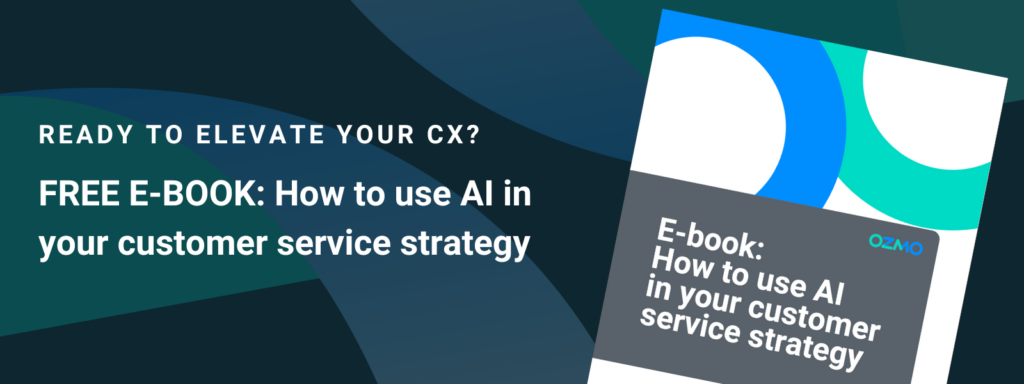Today’s call centers face the challenge of accomplishing more in even less time. Nearly two-thirds of businesses have experienced an increase in call volume.
Yet, despite soaring service requests, customers aren’t willing to wait. 66% of customers expect a response to their outreach within five minutes or less. However, there are only so many hours in a day. How can call center teams keep up with increased demand?
One way to improve call center efficiency is by leveraging self-service tools. Customer self-serve can ease strain on contact center agents and help streamline the tech support experience for customers. In this blog post, we’ll dive into how broadband and telecom companies can use customer self-service to decrease agent workload and improve call center efficiency.
How to use self-service to improve call center efficiency
Self-service tools are no longer a nice-to-have but a must-have for telecom and broadband businesses. Below, we go over a few ways customer self-service helps streamline contact center operations.
Self-service reduces call volume and improves first-call resolution
High call volume not only raises business costs but also increases case loads on agents. A constant high-volume case load increases the risk of call center agent turnover and burnout.
Often, call centers experience a high call volume due to repeat calls from customers regarding unresolved service issues. This is where strong self-serve tools are critical to the success of call centers. Customer self-serve tech support, such as chatbots or interactive video tutorials, is well-equipped to answer customers’ frequently asked questions regarding topics like billing or activating their eSIM card.
Self-service tools empower customers to resolve issues independently, increasing digital adoption rates. As customers are encouraged to seek out self-serve resources, call center call volume decreases, allowing agents to focus on complex cases that require human expertise.
Additionally, as these tools enable customers to access reliable, easy-to-understand troubleshooting, the number of repeat callers decreases, resulting in a reduction in call volume and an improvement in first-call resolution rates for a business. In turn, improved first call resolution also lowers business expenses. Research indicates that mid-sized call centers that improve first-call resolution by one percent can save $286,000 annually. Self-service can be crucial for reducing agent turnover while also creating potential for significant cost savings for companies.
Enhanced self-service improves NPS and reduces churn
When contact center agents can provide faster, more accurate answers to customers the first time, this creates a better customer service experience. Happy customers are more likely to stay loyal to businesses.
If customers have to call in multiple times about the same issue or wait in long call queues, this creates a poor customer service experience. Customers aren’t giving second chances to companies that fail to meet their expectations. 96% of customers leave a business after a single bad experience, meaning good tech support is vital for company success.
How can broadband and telecom companies use tech support to reduce customer churn and increase brand loyalty? Consider leveraging customer self-service to improve the overall customer experience. 77% of customers view a brand more favorably if there are self-service options.
Additionally, offering customer self-service allows customers to skip the call center queue and access instant support. This is especially critical for Gen Z customers, who are less likely to wait for even a minute on hold.
Adopting a self-serve solution doesn’t mean compromising on the quality of tech support, either. Tools such as AI chatbots deliver quality customer support. This is because conversational AI chatbots use machine learning (ML) and natural language processing (NLP) to better understand the nuances of customer requests compared to previous generations of chatbot technology. It also allows customers to access the support they need at any time of day or night.
Providing customers with access to reliable, easy-to-follow self-service options is crucial for improving net promoter score (NPS) and other key call center metrics. Metrics such as NPS and customer retention rate are essential for assessing the health of a business. Improved retention and NPS mean customers are less likely to switch to a competitor.
Self-service decreases business expenses and improves scalability
Self-service tools, such as interactive tutorials, are critical for reducing business expenses and operational costs in contact centers. Companies can use self-service to reduce average handle time and help agents work smarter, not harder.
If customers can access reliable information for self-service troubleshooting, they’re more likely to turn to these options in the future. As digital adoption increases, call volume goes down. This means agents can handle more cases from customers with more complex service inquiries or who prefer to speak to someone over the phone. As this combination of agents and self-serve tools can address more cases in less time, businesses are less likely to need to hire additional staff.
As a result, companies can save money on resources that might usually be allocated to hiring staff to tackle higher call volumes. Additionally, if customers can access instant and reliable tech support, they’re less likely to churn. Keeping current customers is significantly less expensive than acquiring new ones. It costs up to seven times more to attract new customers than to retain the current customer base, making retention critical to a company’s bottom line.
Self-serve also makes it easier to scale tech support. This is especially critical for regional service providers to stay competitive in increasingly crowded broadband and telecom markets. Self-serve tools, such as chatbots, help these local businesses respond to customers in a more timely manner, which can be a challenge with a smaller team. It also enables these service providers to compete with larger, nationwide carriers without the need to hire additional staff.
Boost agent engagement and reduce burnout
There’s no easy way to say this: most contact center agents want to quit. Research shows seven out of 10 agents have considered leaving their jobs. High-volume case loads, accompanied by repetitive tasks and recurring issues, can quickly lead to agent burnout.
High agent turnover can have devastating consequences for businesses. It can cost up to twice an employee’s salary to replace them. This means that if a company pays its contact center agents $40,000 annually, it could spend up to $80,000 to replace each one that walks out the door.
The cost of agent turnover adds up fast, not only for a company’s bottom line, but for its customers. Prioritizing employee engagement is critical for the customer experience. Engaged employees are 21% more productive than their disengaged colleagues. Research also shows that businesses with engaged employees have a 12% increase in customer advocacy. Additionally, companies with engaged employees have a 233% higher customer loyalty rate than those companies that don’t.
The impact of employee engagement on the customer experience is too powerful to ignore. So, how can businesses improve contact center agent engagement? Self-service tools can play a critical role in boosting employee engagement and retention. Companies can use customer self-service tools to handle repetitive tech support requests to reduce case loads on agents. With fewer repeat service issues on their plates, agents can focus on the cases that require human intervention.
Telecom and broadband providers can also use these self-service tools to create a more effective contact center onboarding program. When agents are more confident they have the skills to help, they’re more engaged and able to work smarter, not harder.
The strategic value of self-service in contact centers
Self-service tools, such as chatbots, won't replace human agents. Instead, they'll play a critical role in improving call center efficiency and reducing agent burnout. Self-service tools are crucial for reducing call volume, alleviating case burdens on agents, enhancing the customer experience and lowering business expenses. This means that self-service isn't only a cost-saving tool, but also a critical differentiator that helps businesses stand out from competitors.
Telecom providers looking to improve the customer experience through AI-driven self-service tools can explore our free e-book. It covers strategies to reduce resolution times, lower business costs and elevate customer service delivery. The guide is available for download now.




